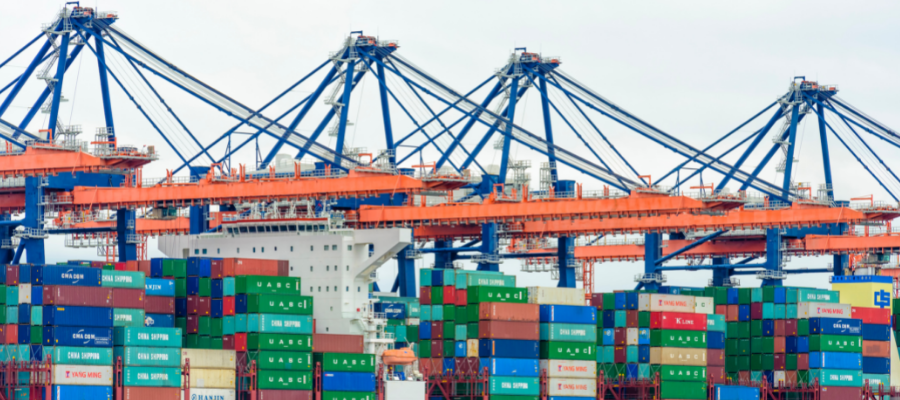🕒 Article read time: 2 minutes
Shipping disruption – is it time to reform the just-in-time model?

Global supply chains appear to be creaking at the seams in 2021.
The perfect storm of port closures, shipping lane blockages and shortages of vital components and skilled workers is shining an unforgiving light onto the potential vulnerabilities and bottlenecks designed into the word’s highly interconnected supply chains.
First there was the disruption caused by the six-day blockage of the Suez Canal in March, when a huge container vessel, the MV Ever Green, became stuck, blocking the major shipping lane connecting the Red Sea and the Mediterranean for almost a week.
A little over two months later, China partially shut the Port of Yantian in Shenzhen, from which over 90% of the world’s electronics are exported, for several weeks in May and June. By August, the country had partially shut Ningbo-Zhoushan – the world’s third busiest port after Shanghai and Singapore – after a single worker became infected with COVID.
THE RIPPLE EFFECT
Blockages and closures like these can have a devastating ripple effect, threatening more disruption to supply chains in the build up to the all-important Christmas shopping period. Over the past two years, the COVID-19 pandemic has knocked the normal patterns of supply and demand out of kilter, placing the shipping industry under intense pressure.
The partial closures of key terminals in China have loaded further pressure onto other ports, already operating at or near full capacity, inevitably shifting congestion to other parts of the supply chain.
Off the west coast of the US, there have been a record number of container ships queuing outside major ports, including the Californian coastal cities of Long Beach and Los Angeles. Ship tracking website Marine Traffic counted more than 50 container ships outside Long Beach and Los Angeles on 13 October 2021. This frozen armada of ships, idle and waiting for space to unload their cargo, create an unsettling spectacle.
CAUSES OF DISRUPTION
Supply chain analysts often attribute these disruptions to the single-minded focus the industry has had on just-in-time delivery and just-in-time manufacturing. A delay of one component can upend entire production cycles. The most prominent example of this has been in the automotive sector which has had to scale back its production of vehicles owing to a scarcity of semiconductor chips.
Then there has been the well-documented shortage of HGV drivers, most notably in the US and UK, where containers have languished for long periods in ports owing to a lack of drivers to transport them inland for onward delivery. Seaborne freight costs have also soared to record highs, and by August 2021 had tripled year on year. This has led to some exporters delaying shipping goods with low margins, while for exporters of high margin goods, air freight is looking like an increasingly attractive proposition. Although shipping costs are now coming down from their record highs, there remains a formidable logjam of ships to work through at many ports.
REFORMING THE JUST-IN-TIME MODEL
Advocates for the just-in-time model maintain that instead of shipping components halfway across the world, manufacturers should be located closer to their suppliers. This can be achieved by on-shoring production and removing slow and expensive long-distance shipping. On-shoring can also have the added benefit of shrinking the total emissions from a product’s carbon footprint.
Delays in the delivery of the highly sought-after semiconductors have led the US, the EU, Japan and China to try to on-shore semiconductor manufacturing
“Longstanding challenges faced by global supply chains have been severely exacerbated by the unprecedented disruption brought about by the COVID-19 pandemic this year,” said Alexandra Herdman, Public Policy Manager, Logistics UK, “This disruption cuts across all aspects of the supply chain – road haulage, container ports, warehouses and the shipping lines. The experiences of many businesses this year may well prompt a review of current practices and business models.”
*www.logistics.org.uk/water
Published On: 11/11/2021 16:00:51

Comments Section
If you are a Logistics UK member login to add comments.